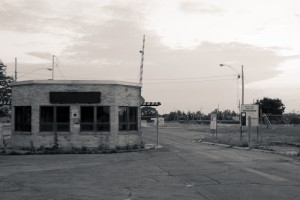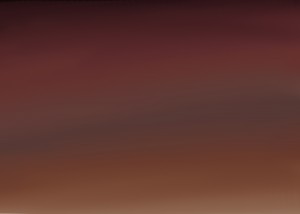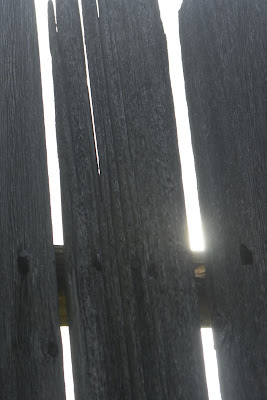“Ladies and gentlemen, boys and girls, and wild ones of all ages. Step right up. I welcome you to come right in… inside the electric circus.”
– “The Big Welcome” – WASP (1986)
As far as album introductions go, I personally think that’s one of the coolest I’ve ever heard. It’s not your typical heavy metal intro… no guitars, no drums, just some circusorgans playing and a big top emcee inviting one into the tent. Of course, then it kicks into high gear with the title track. WASP was never really known for their strong songwriting, but they did have their moments in the late 80’s/early 90’s… but Idigress.
As in all visual art, composition is key to making a successful photograph. Without good composition, a photograph becomes merely a picture of something. But what is composition and what makes a composition a good composition? That’s a tough question since there are no hard and fast rules of art, only guidelines that should, at the very least, be considered when creating a piece. Unfortunately, there are nearly as many opinions on the answer to that question as there are people on the planet. My answer to the first part of the question is this: In composing the photograph, one must always pick out the element of emphasis and let all the other elements in place support that emphasis. Sounds simple, no? That hard part is, however, achieving “good’ composition.
The ruling guideline with a lot of “professional” photographers right now is a concept called “Rule of Thirds.” Basically in this “rule” you take your frame, draw three lines horizontally, and make them equidistant from each other. You repeat the process once more, this time drawing vertical lines, to end up with 9 rectangles. You then have 4 intersections inside the frame. When composing your photograph you want to place your subject on one of those points (often this is called the “power position”). When I started learning about photography, I read a lot of Popular Photography magazine. When I would read their image crititiques, they would invariably crop an image to conform to the Rule of Thirds. It really didn’t matter what was in the photo, they wanted it to conform to that rule. At the time I took the Rule of Thirds as sacrosanct and attempted to compose all of my photos in that manner. The fact that I wasn’t always successful was beside the point – this was something I was shooting for which each photo.
When I took my first photography class in 2007 my professor never really discussed Rule of Thirds unless she noticed a student who seemed to be struggling with composition. Given everything I had read in Popular Photography at that point, I wondered a little bit why she didn’t talk about it much. When I consulted the text book on composition, it also spent very little time discussing the rule. I just kept on doing what I was doing. Then one day during a class critique session my professor pointed out something she found interesting in another student’s photo and brought up the concept of CLOTIS. Basically, this concept told that if you arranged the elements in the frame in such a way that it formed one of the letters in that word, you made what was called a “safe” and what could be considered a “good” composition. The Rule of Thirds was not as sacred as I had been led to believe and here was a professional MFA Photography professor giving me license to break that rule if it didn’t work.
There is a reason why one should avoid placing the subject in dead center of the frame – it basically keeps your eye fixed on that one point in the photograph and you have to actually work to look around the photo. In the early 1920’s Arthur Hammond wrote that the reason why this bothers people is because it causes actual physical exhaustion due to the muscles that articulate the eye being exerted. I laugh this off because unless a person is having some serious metabolic issues, the tiny movements of the eye aren’t really going to force someone into having to take a nap because of tiredness, but I get the point. A person is going to have to actively think about looking around the frame instead of being led around in a natural manner. Some may say this is the sheeple in everyone coming out, but I’ll leave that to those who study human behavior to debate that point.
But what if the Rule of Thirds is not practical? Admittedly that wasn’t a question I thought much about before my professor mentioned the concept of CLOTIS. What if my subject was too large to be placed neatly into one of those power positions? I then started to realize that a subject can be placed close to center if it fills (or comes close to filling) the frame or if it can be arranged in such a way that your eye is guided naturally from the subject around the photo (which would be something CLOTIS-like at work). I have plenty of photos that many consider successful (at least at my level of accomplishment at the time they were created) that don’t necessarily adhere to the Rule of Thirds.
The Rule of Thirds deals mainly with the placement of elements around a frame, as does CLOTIS to an extent. There are plenty of other concepts relating to the use of lines and shapes that come into play (which is something that CLOTIS also covers). Some of the aforementioned successful photos (often unconsciously) incorporate those other concepts, while others do not.
Ok, so why am I writing about this? The answer is simple – I was not happy with something I was told today by a “professional” photographer. The photos he looked at today weren’t exactly the pick of the litter (long story behind why I didn’t have my best photos with me, but rest assured the fault lies with the event organizers regarding this), but they were judged by more than a few degreed professionals and lay-people as successful. The biggest problem he found with the photos I had was composition. The thing that really got me was he kept going back to Rule of Thirds and how most of those images didn’t achieve their potential because of Rule of Thirds. On one photo he claimed the subject was too dead center (it was not) and that spoiled the whole photo. I pointed out to him that the subject came close to filling the frame and that the point of focus I was going for was actually quite close to the upper left power position, to which he replied that I should never be filling the frame. I was a little perturbed by this. I mean, if he didn’t get why chose the focal point I chose, then that’s fine. But here he was dismissing it due to adherence to a “rule” that is more often than not broken. This left me a little puzzled as in the three professors who have taught me photography thus far (each one a professional artist and photographer and each wiht a lot of experience in various areas of the field) have never stuck so close to the “rules” of composition when critiquing a piece by anyone in class. There was one photo I submitted (among my best) that was textbook Rule of Thirds in compostion and this particular photo was his second favorite. Here is the kicker – his favorite photo (and a favorite among the group critique) actually did not adhere to the Rule of Thirds. I thought about calling him on this, but I quickly realized I wasn’t there to argue with him.
Now here’s the conclusion (I know what you’re thinking “it freaking took you long enough!”) – The “rules” of composition are merely guidelines that more often than not work to create effective photographs. There are times when they can be ignored and times when they can be broken, and it’s up to the artist to know when those actions are appropriate. Adherence to hard and fast rules only lead to dogmatic thinking in a given medium, and in the end the art suffers because of it. The Rule of Thirds is an effective starting point for beginners because it helps them keep the subject out of dead center. For those more advanced it becomes a good guide and while I rarely see it flouted, I also rarely see strict adherence to it. This person who looked at my photos today demanded strict adherence to it.
I was told by this person to look at a lot of other people’s photographs (I do – just ask my wife about all the photography books in the house) but to remember that just because it’s hanging on a wall or printed in a book doesn’t necessarily mean it’s good. I laughed a little inside as the thought entered in my mind that just because one calls theirself a photographer doesn’t mean he or she knows much about photography. He was listed on the signup sheet as a photographer, sculptor, and woodworker – that right there should have sent up a red flag (a 3-D artist who dabbles in 2-D, but he was the only person with open slots). In all fairness, there were a few non-compositional things he said about my work that he thought could use some improvement, with which I had absolutely no problem. Ninety percent of his feedback, however, was devoted to composition and Rule of Thirds. As an aside, I shared what I was told with my Digital Art professor (who also happens to be my 3rd photography professor and MFA with over 25 years of experience in the field) and she seemed a little puzzled by this person’s feedback as well.
I am personally bewildered by the strict adherence to the Rule of Thirds by so many “professionals” today. In reading some older work on photography, especially after it broke out of its image as a mechanicial activity and gained recognition as an artistic medium, the subject of Rule of Thirds is briefly touched upon. However, it is only regarded as a starting point used when forming ideas for a composition. The current, almost fanatical following, to me at least, is restricting the artisitic side of photography. Granted, magazines like Popular Photography don’t necessarily cater to more advanced photographers. That and the fact that the magazine is 80% product reviews pretty much caused me to stop reading it halfway into my Photography I course. I would think, however, since those who read this magazine in particular have more than a passing interest in photography, they would encourage a little bit of artistic experimentation. The upside, however, is that they’re at least trying to introduce some intellectual element into composition – a friend of mine was told once (by a complete layperson) that the subject MUST ALWAYS be in the center and fill the frame of a photograph. Talk about your bad advice.
Do I have a lot to learn? Of course I do. While I remain confident I’m on the right track, I know I have a long way to go before I can achieve something close to the levels of the masters such as Keith Carter, Paul Strand, and Henry Cartier-Bresson (among others). That’s why I will keep studying, shooting, and seeking feedback from those I admire to whom I have some access and have built a relationship. I would like to give a shout to those three professors who have taught me so much so far – Steffani Frideres, Troy Huetchter, and Laury Emery. Without them I don’t think I would have ever rediscovered my artistic side. What I found interesting and very promising was this – one of the Photography professors from another college in the area told me to look her up when I got the chance. She may, of course, want to tell me to forget it and that I have no talent, but something in her demeanor in talking to me told me she saw some potential in me. The journey is starting to get interesting.
Well, it’s late and I have other things to do before I go to bed. To all of you who made it this far – thank you for enduring my rant. To all of you I bid you goodnight.











